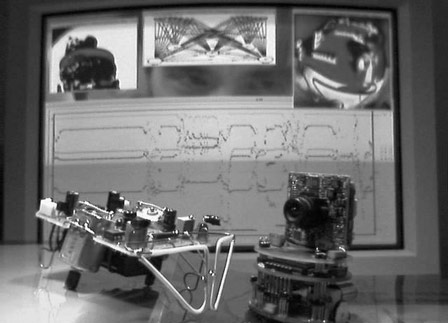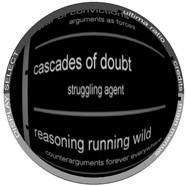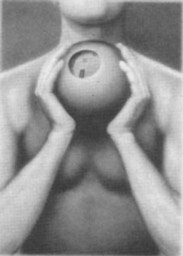Video conference / live streaming

As exemplary of a video conference / live streaming we outline our cooperation with:
• Dr.
Herbert Helmle, AMTech GmbH, Weinheim
• Prof. Niels
Birbaumer, Institute of Medical Psychology and Behavioral Neurobiology, Eberhard-Karls-University
of Tübingen
• Prof. Frank Pasemann, TheoLab, Friedrich Schiller University of Jena
• Dr. Gerd Doeben-Henisch, Frankfurt/Main
• Daniela Alina Plewe, Artist, Berlin
• Derrick de Kerckhove, Director of The McLuhan Program in Culture and
Technology, University of Toronto
Further works are presented at the website www.locked-in.com.
l o g – i n / l o c k e d o u t conceptualizes video conferences and live streaming forums at which for example, a neuroscientist and an artist may converse. The partners for our video conference / live streaming forum Berlin - New York have already been chosen. Fundamentally, our video conferences are not tied to any particular place or person. Thus, desired partners, new software or new products can be presented.
 |
A system
for the mutual detection of the fixated visual target may be integrated.
Our cooperating partner for this equipment is Dr. Herbert Helmle, AMTech
GmbH. During the video conference, the eye movements of both participants are measured and superimposed on the observed image of the conferring partner. Is the gaze directed at eyes and mouth? How is the gesture recognized? Does the spoken word influence the visual target? And what if the participants are shown their own eye movements? |
A video conference
with the Institute of Medical Psychology and Behavioral Neurobiology, University
of Tübingen, offers the possibility to presents the Thought Translation Device
(TTD), developed by Prof. Niels Birbaumer, for the communication with paralyzed
people.
The TTD is a training
system based on self-regulation of brain activity. Completely paralyzed patients
learn to regulate their own electric brain activity. After successful self-regulation
of their own brain responses, patients select letters or words from a computer
menue directly with their brain activity. The learning process involves feedback
of the changes of the brain responses on a computer screen. By observing your
own brain you learn to control it.

During the video conference / live streaming in cooperation with Prof. Frank Pasemann artificial neural structures are presented that control the behavior of autonomous robots. These brain-like systems are generated by an evolutionary process. Participants can probably influence this process interactively. The behavior of robots can be followed by a camera. Specific neural structures and their corresponding activity are presented graphically. They can be correlated to the observed robot behavior. In addition cooperative interaction of robots solving an interesting task may be monitored.
At the video conference / live streaming forum, in cooperation with Dr. Gerd Doeben-Henisch, so called bots (artificial software intelligences) will be introduced that seem to carry on an intelligent dialogue. Brainlike structures consisting of neuron models exchange energy patterns that are made audible as sound occurances. Do these interactions represent acts of communication?

 |
The dialogue
between artists and neuroscientists per video conference / live streaming
will be fed into the modified decision support system deriving from recent
Artificial Intelligence Research developed by Daniela Alina Plewe. This
discourse will then be translated into logical formulas and fed into a
decision support system deriving from Artificial Intelligence Research.
The system represents arguments, assumptions and contradictions. It can locate inconsistencies and propose conflict resolutions.The system can also stimlulate questions concerning the hypothesis and facts underlying the discussion. The experiment investigates the potential of a feedback between the "rational reconstruction" and human communication. Can an implemented formalism - possibly considered as a kind of objectivity - challenge the vivid discourse on the other side? |
|
|
|
|
Derrick de Kerckhove is an acknowlegded critic in Art and New Media. He agrees with Media theorist Marshall McLuhan that functions of the central nervous system are being shifted into the computer. "The message of the medium of cyberspace is touch, body, identity. These are precisely the three areas of our being that pessimistic critics say we are losing to technology. But isn't it clear, too, that to put them in jeopardy is also to bring them out in the open? Until now the body [...] is that thing that we often only get to know when it stops functioning. By losing something of their physical presence on-line, people are made aware of the fact that they have a body and that they are lucky to have one. The same goes for identity." (De Kerckhove. Connected Intelligence. 1997: 51) |
 |